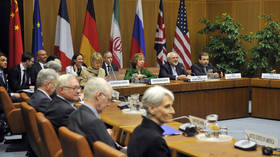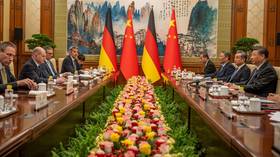When paper money goes to zero value: Venezuelan hyperinflation explained (PHOTO)
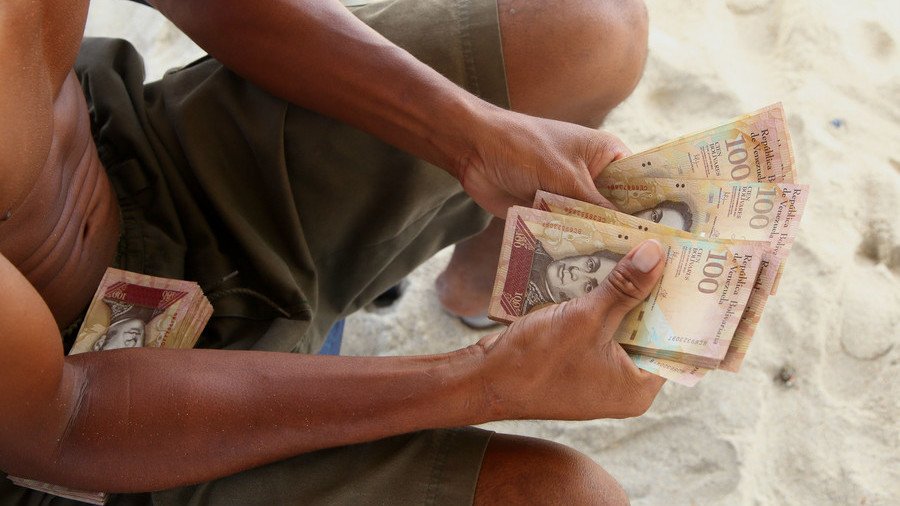
Inflation in Venezuela this year could top one million percent, the International Monetary Fund (IMF) predicts. This gallery puts the buying power of today's bolivar into perspective.
A kilogram of meat costs 9,500,000 bolivars, or the equivalent of $1.45.
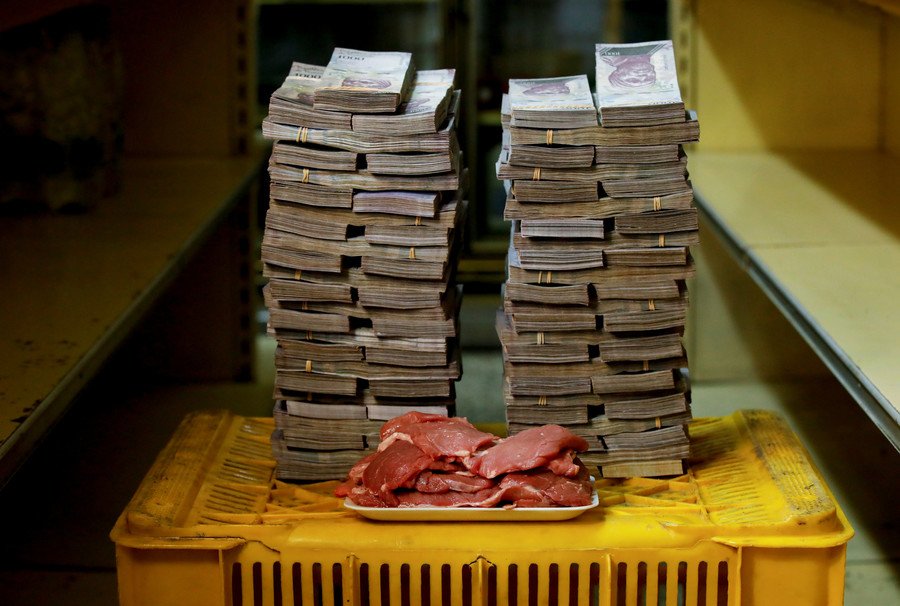
A 2.4 kg chicken is worth 14,600,000 bolivars, or $2.22.
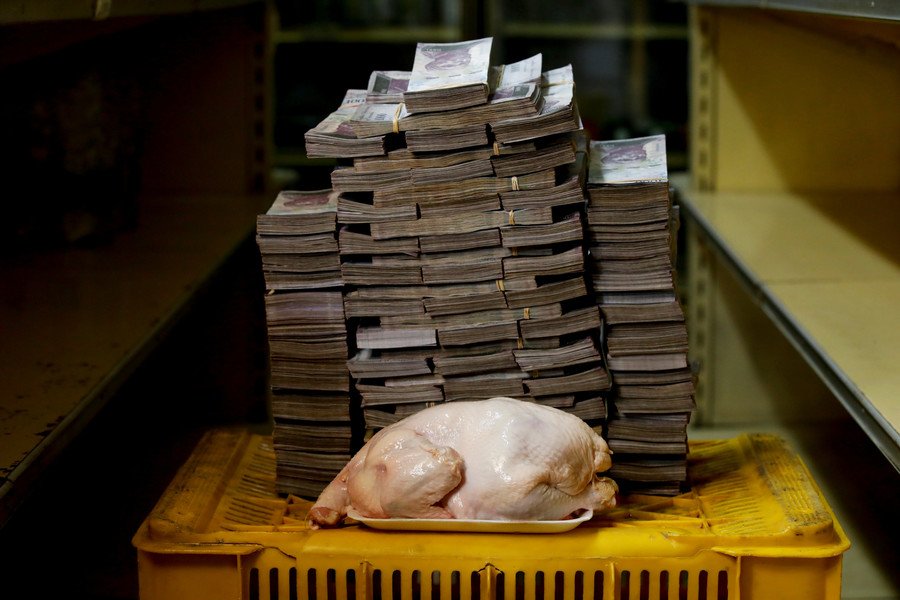
A 1kg packet of rice costs 2,500,000 bolivars ($0.38)
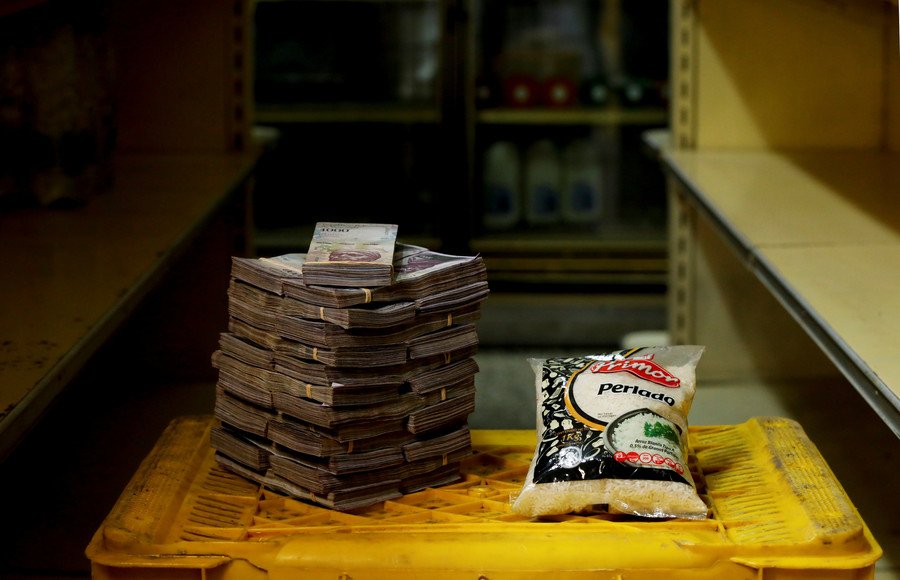
A kilogram of cheese? Prepare to fork out 7,500,000 bolivars ($1.14)
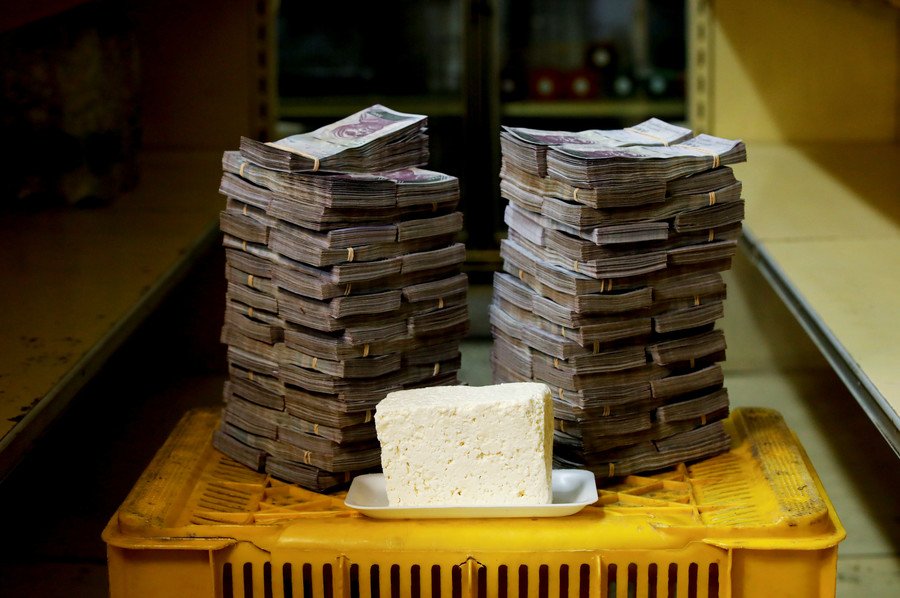
A toilet roll costs 2,600,000 bolivars ($.040)
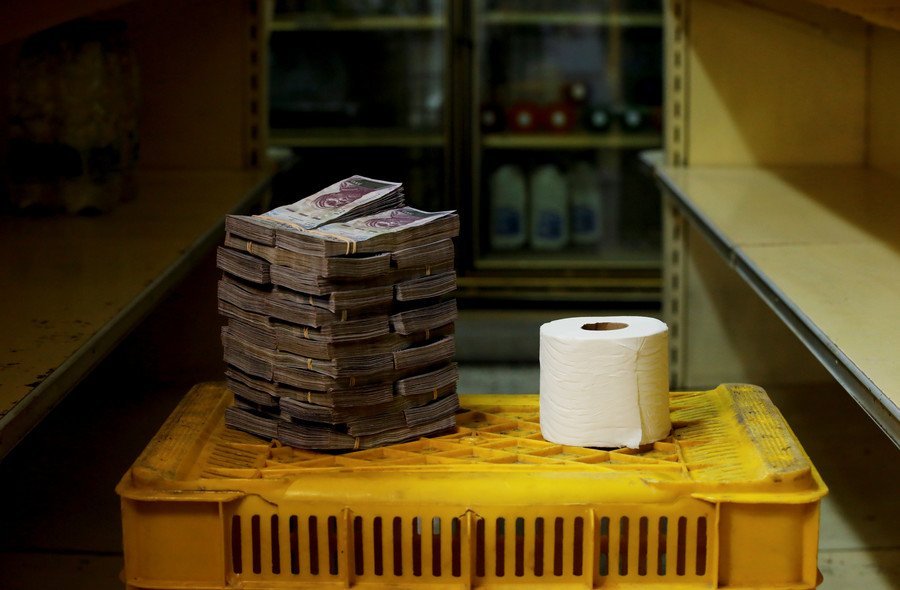
Pasta? 2,500,000 bolivars ($0.38)
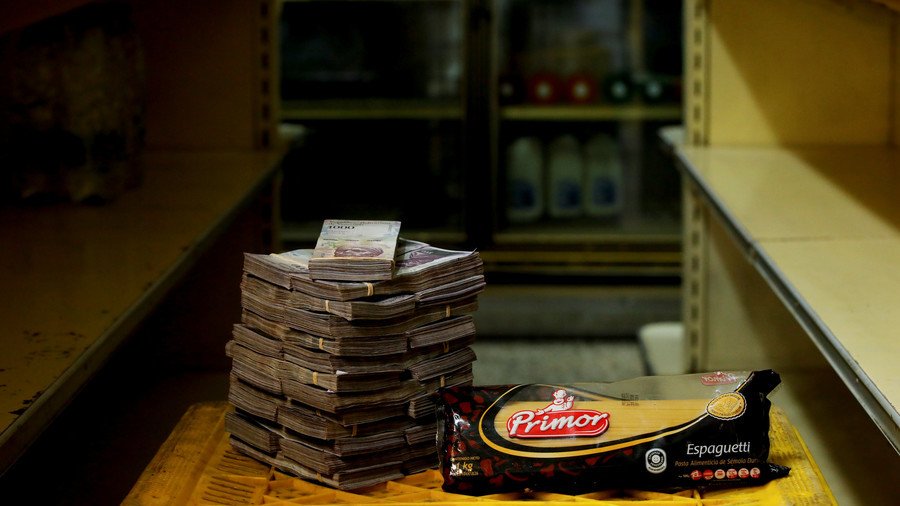
A kilogram of carrots costs 3,000,000 bolivars ($0.46)
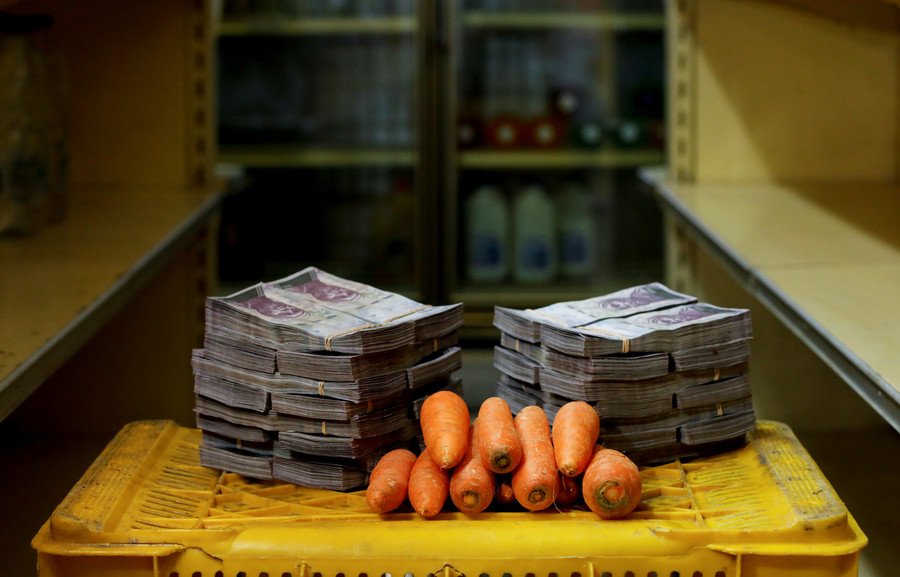
The current price for a kilo of tomatoes now stands at 5,000,000 bolivars, or $0.76.
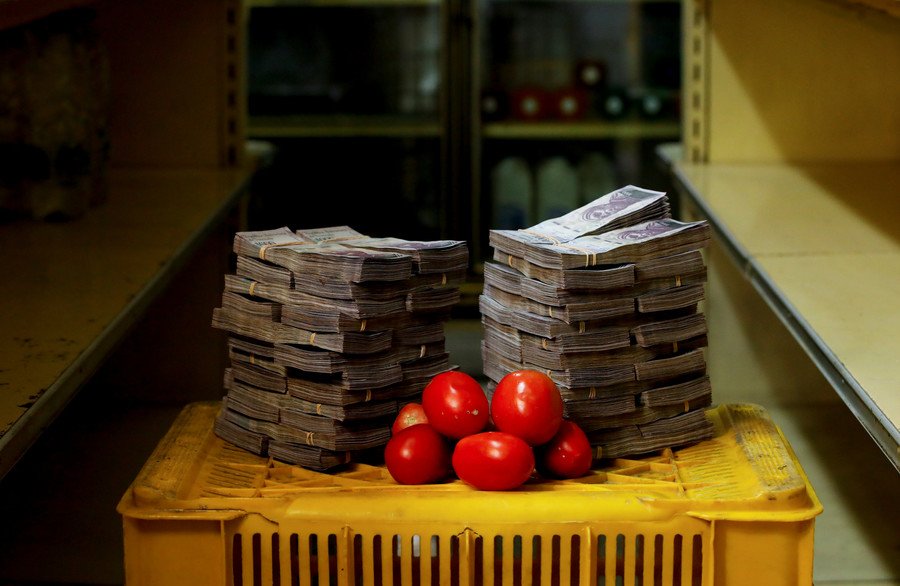
A kilogram package of corn flour costs 2,500,000 bolivars, or the equivalent of $ 0.38.
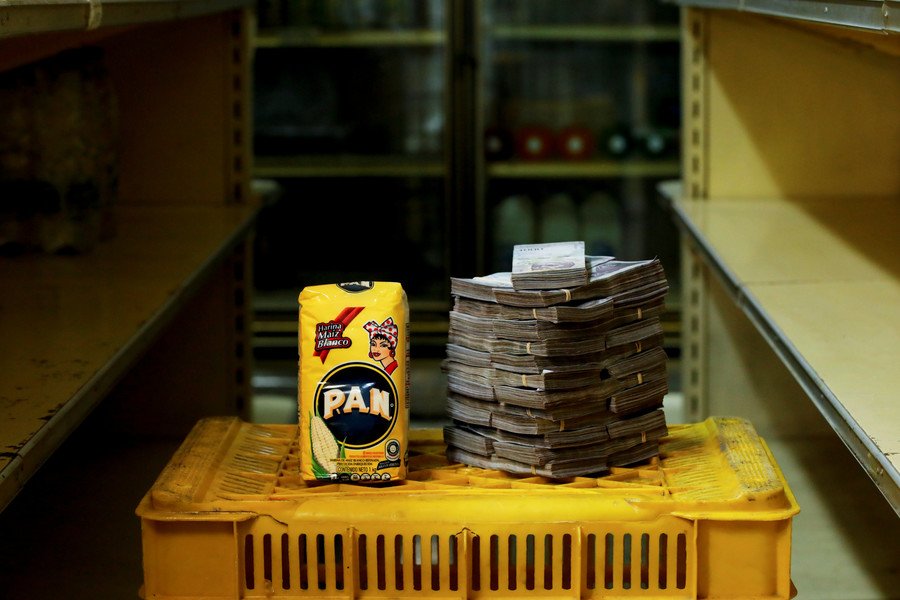
A bar of soap reached the price of 3,500,000 bolivars, or $0.53.
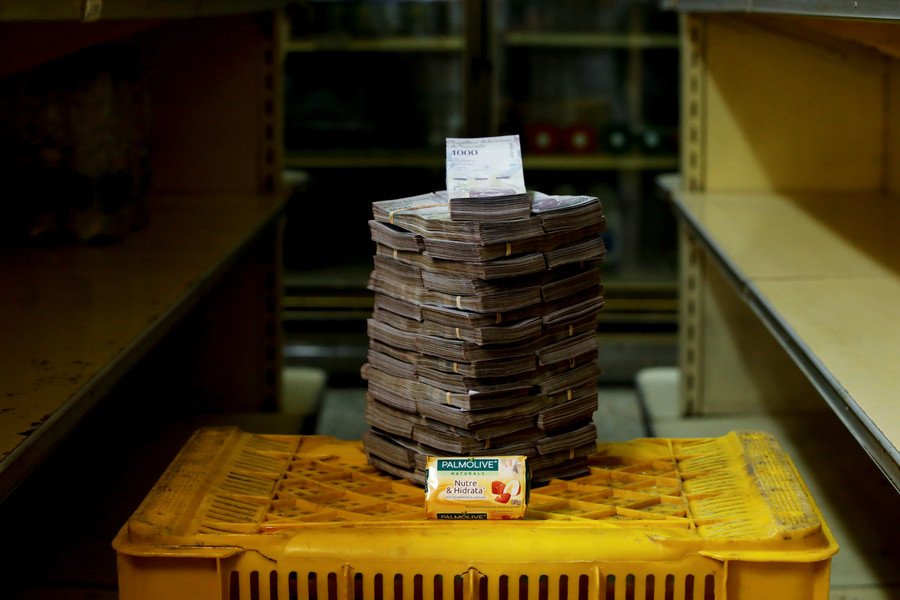
Hyperinflation destroys purchasing power of money and encourages hoarding of goods, as people and businesses wait for further price increases. When there is a loss of confidence in a currency's ability to maintain its value, sellers demand a risk premium to accept the currency; they do this by raising their prices.
Russia faced hyperinflation after the collapse of the Soviet Union, while the economic crisis in Zimbabwe made the country ditch its domestic currency in 2009 in favor of the US dollar and other stable currencies.
For more stories on economy & finance visit RT's business section







